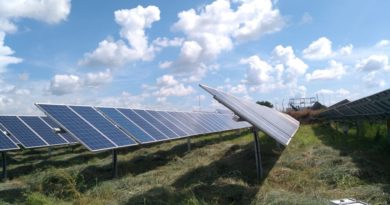To be a Global Leader through National Solar Mission Target
One of the key objectives of National Solar Mission(NSM) was to contribute to the global effort to meet the challenges of climate change.
National Action Plan on Climate Change (NAPCC) was launched by then Prime Minister of India, Dr. Manmohan Singh on June 30, 2008.
The NAPCC also pointed out the Solar Energy potential of India as future energy source and as a decentralized distributed energy. Based on this vision Jawaharlal Nehru National Solar Mission (JNNSM) was launched in Jan 2010 by Government of India with a target to setup 20,000 MW of grid connected solar power by 2022 as well as 2GW off-grid installations,The 20,000 MW Grid Connected solar power target was met four years ahead of schedule that is in Jan 2018 only through both solar parks as well as roof-top solar panels.
India has set a new target of achieving 100 GW of solar power by 2022 in the 2015 union budget of India.
Achieving this National Solar Mission target would establish India in its ambition to be a global leader in solar power generation. The Mission aims to achieve grid parity (electricity delivered at the same cost and quality as that delivered on the grid) by 2022.The National Solar Mission is also promoted and known by its more colloquial name of “Solar India”.
On 30 November 2015 the Prime Minister of India Mr. Narendra Modi and the Prime Minister of France Mr. Francois Hollande launched the International Solar Alliance(ISA). The ISA is an alliance of 121 solar rich countries lying partially or fully between the Tropic of Cancer and the Tropic of Capricorn, a number of countries outside of this area are also involved with the organisation. The ISA aims to promote and develop solar power amongst its members and has the objective of mobilising $1 Trillion dollars of investment by 2030.
References:




Pingback: Job Opportunities for Women Workforce in India’s RE sector - SolarPost
Pingback: Solar Energy in Uttar Pradesh (UP)-India - SolarPost
Pingback: Off-Grid Solar Based Solutions in India - SolarPost
Pingback: Solar PV Projects Are Beyond Just Electricity Production - SolarPost